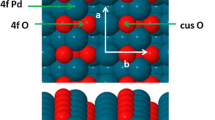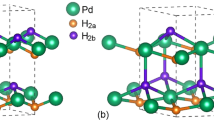Abstract:
The electronic and geometric structures of bulk PuO2 and its (110) surface have been studied using a periodic model within the generalized gradient approximation (GGA) of density functional theory (DFT). The sixty core electrons of the Pu atom have been represented by a relativistic effective core potential and scalar relativistic effects have been incorporated on the valence orbitals. For bulk PuO2, we predict an equilibrium lattice constant of 10.10 a.u. and a cohesive energy of 17.28 eV, in good agreement with experimental data. For the (110) surface, upon relaxation, the distance between the top layer and the next layer is found to decrease by 0.12 Å, i.e. 5.3% of the corresponding interlayer distance in the bulk. The distance between the two oxygen atoms on the top layer is found to increase by 0.15 Å, i.e. 5.6% of the corresponding bulk value. The small surface relaxation energy of 0.268 eV per unit cell indicates the fair stability of this surface. The effective charges on Pu and O atoms show that the chemical bonding in this system is not purely ionic. Together with the metallic feature of the density of states (DOS) on the surface, the effective charge distribution provides some basis for understanding surface reactivity and corresponding support for catalysis.
Similar content being viewed by others
Author information
Authors and Affiliations
Additional information
Received 16 June 2000
Rights and permissions
About this article
Cite this article
Wu, X., Ray, A. A density functional study of plutonium dioxide. Eur. Phys. J. B 19, 345–351 (2001). https://doi.org/10.1007/s100510170309
Issue Date:
DOI: https://doi.org/10.1007/s100510170309




